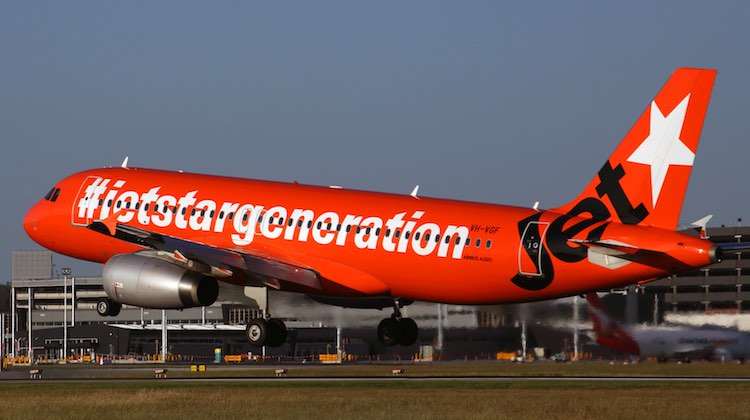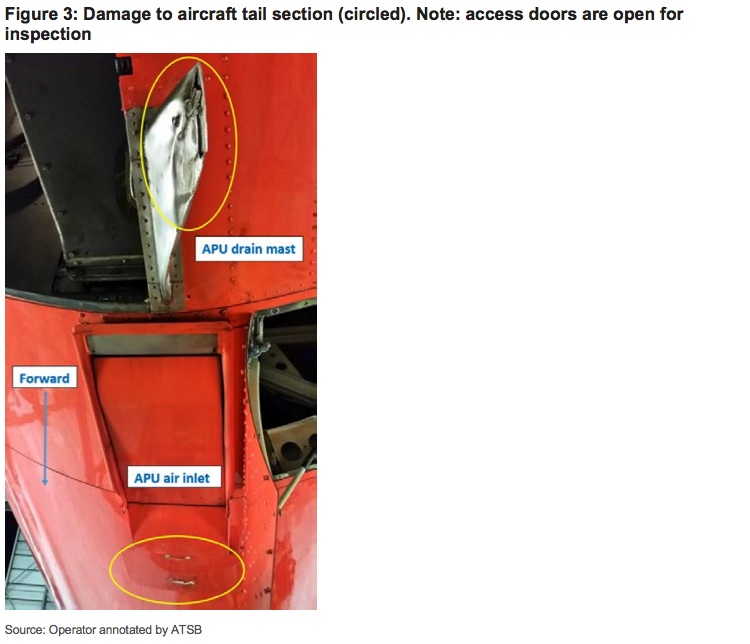 The Australian Transport Safety Bureau (ATSB) has released its report into a tail strike incident involving a Jetstar Airbus A320 taking off from Melbourne on May 11 2016.
The Australian Transport Safety Bureau (ATSB) has released its report into a tail strike incident involving a Jetstar Airbus A320 taking off from Melbourne on May 11 2016.
The tail strike, which occurred when a cadet pilot applied an excessive sidestick input during rotation, took place on Jetstar Airbus A320 VH-VGF which was departing Melbourne bound for Hobart carrying 134 passengers and seven crew.
It was the cadet pilot’s first flight as the pilot flying. Alongside him in the flightdeck was a training captain in the left seat and a safety pilot in the jump seat.
The ATSB’s final report, published on Monday, said the cadet pilot applied the larger than normal sidestick pitch input which resulted in a higher than normal pitch rate and the aircraft rotated “significantly faster than usual”.
While there were no indications in the flightdeck of anything abnormal as the aircraft began its normal climb with standard acceleration, cabin crew seated at the rear of the aircraft alerted the pilots they had heard what may have been the sound of the aircraft tail possibly contacting the runway.
The captain decided to return to Melbourne for the aircraft to be inspected, advising air traffic control of an “engineering issue” and that “ops were normal”, the ATSB report said.
For the landing, the captain was the pilot flying, while the cadet pilot and safety pilot changed seats, with the safety pilot the pilot monitoring for the return to Melbourne.
After landing, an engineering inspection confirmed that a tail strike had occurred.
“Damage to the auxiliary power unit (APU) diverter (air inlet) and APU drain mast was evident,” the ATSB said.
“This damage was consistent with the aircraft tail contacting the runway surface during rotation.”

The ATSB said Jetstar’s flightcrew training manual showed the pilot flying should apply a half forward setting on the sidestick control at the start of the takeoff roll, or full forward in the case of crosswinds, to counteract the pitch up movement during thrust application until the aircraft reaches 80 knots.
The input should then be gradually reduced to zero by 100 knots.
Rotation should be initiated with a smooth positive backward sidestick input, which was typically one-third to half backstick, with the initial rotation rate about three degrees a second.
The ATSB said information from the flight data recorder showed the “nose-up input reached a maximum value of 12.5° or 78 per cent of a full-scale input”.
“The aircraft rotated with a pitch rate of about nine deg/sec reaching a maximum pitch attitude of 16 degrees. The sidestick input was then reduced and the aircraft’s pitch attitude correspondingly reduced.”
The ATSB said information from aircraft manufacturer Airbus advised that, with the main landing gear fully compressed and wings level, the pitch attitude that would result in ground contact for the A320 is 11.7 degrees. With the main landing gear fully extended, the pitch attitude that would result in ground contact is 13.5 degrees.
The cadet pilot undertook additional training and assessment before returning to flight duties, the ATSB said.
Further, Jetstar also circulated a newsletter to its A320 flightcrew highlighting the need to inform ATC of a suspected tail strike or any failure resulting in damage or debris.
“The potential tail strike was not adequately communicated to Melbourne air traffic control,” the ATSB said.
“This delayed checking the runway for aircraft debris.”
“When a potential tail strike has been reported, ATC restricts operations on the affected runway and arranges that a runway inspection is carried out to identify any runway damage or aircraft debris. Metallic debris poses a particular hazard to aircraft tyres.”
















Dave
says:Two things surprise me with this. Firstly there was no tailstrike protection or prevention designed with the plane. Secondly that there was no strike indication in cockpit
artful dodger
says:It’s an Airbus, there are lot differences from other, main stream aircraft. Not the first, not the last.
Bill
says:Life is full of mistakes, as long as we can walk away, to go Fly another day
Jonathan Ventham
says:I was turned off Jetstar a few years ago.
here’s yet another example of the why …
David
says:I think these planes need a tail bumper.